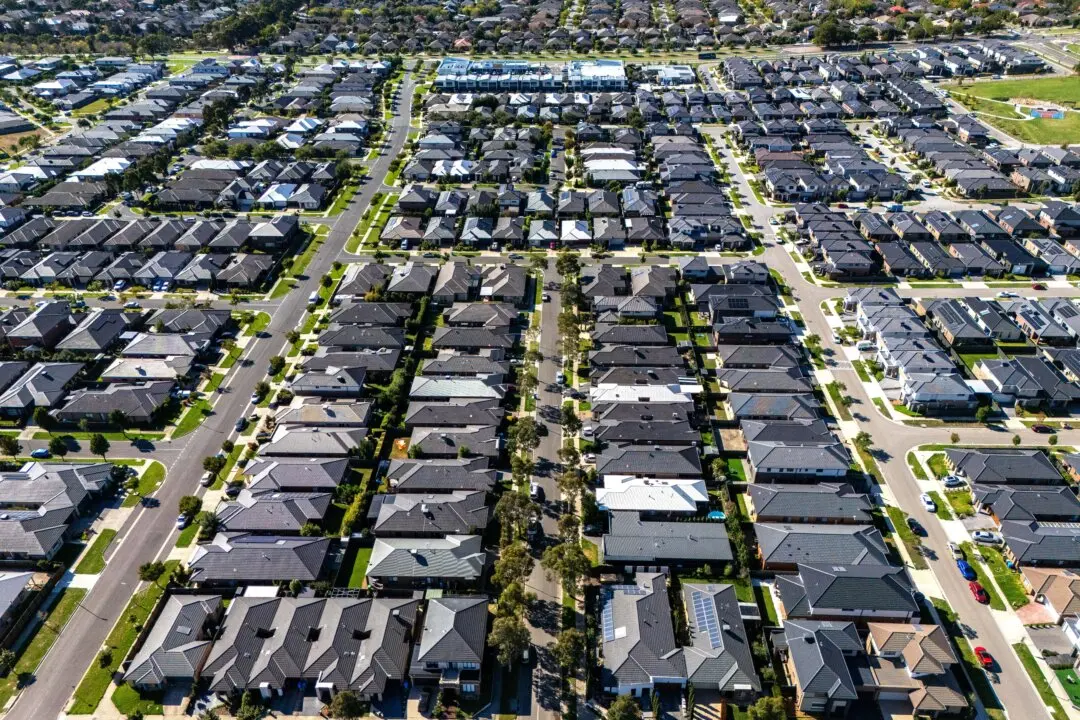In their second debate, Treasurer Jim Chalmers and his counterpart Angus Taylor sparred over housing, tax cuts, and energy.
It follows a weekend of housing policy announcements tied to tax cuts.
At the Liberal Party campaign launch in Sydney on April 13, Opposition Leader Peter Dutton’s announced a Coalition government would allow first home buyers of newly built homes to deduct their mortgage interest payments (up to $650,000) from their taxable income.
This is on top of allowing first home buyers to $50,000 of their super to buy property.
Labor’s counter on the same day, but in Perth?
A $10 billion fund to build 100,000 homes, with government acting as loan guarantor to slash deposit requirements to 5 percent.
Here are the main takeaways from the debate.

Is Australia’s Financial Situation in Dire Straits?
The debate opened with a reality check for both—Australia is staring down an underlying cash deficit of $42.1 billion in 2025–26, according to the latest budget papers. Can the Treasury afford to give tax cuts anymore?Chalmers defended the government’s fiscal track record, pointing to a $177 billion reduction in gross debt this year and back-to-back budget surpluses—this was driven by high commodity prices outside of Australia’s control.
In response, Taylor accused Labor of letting the bottom line deteriorate.
“The truth is, they’ve taken the budget off a cliff. We’ve opposed over $100 billion of Labor’s spending since they came to power … and we will deliver a stronger budget bottom line than Labor,” he said.
Chalmers dismissed the statement as “respectfully rubbish,” urging Australians to check the facts in the budget papers.

Coalition’s Campaign U-Turn on Tax Cuts
After months attacking Labor’s spending, Dutton declared there would be “no more tax cuts.”Then came a surprise campaign pledge, a “large one-off” tax refund for 10 million Australians valued at $1,200, and applicable to workers earning up to $144,000.
Taylor explained, “We re-establish the fiscal rules, making sure we grow the economy faster than spending, making sure that wasteful spending is not committed to, $100 billion under Labor we say is not appropriate.”
He added, “In the short term, we need to make sure that household buffers are rebuilt, that’s why we’re offering the $1,200 tax offset. It’s why we are offering 25 cents a litre off the fuel.”
Chalmers responded claiming, “The thing that Angus hasn’t told your viewers is that his policy is to legislate higher income taxes permanently on the Australian people.”
Housing: Who’s Really Improving Supply?
The Coalition’s housing policy has faced criticism for potentially boosting demand, but not new home supply.“What they miss is that the policy we announced yesterday was for new homes,“ Taylor said. ”We’ve deliberately not done it for existing homes … Having first home buyers as that market is good for first home buyers and good for supply.”
Meanwhile, Chalmers was on the defensive about Labor’s existing $10 billion promise to build more homes, a figure that, as it turns out, wasn’t included in the latest federal budget.

Pressed on the details, Chalmers clarified that the funding is split, $2 billion in grants and $8 billion in loans, rolled out over an eight-year plan.
He didn’t miss the chance to take aim at the opposition either.
“Under Angus and the Liberals, there will be fewer homes and higher house prices,” he warned, arguing the Coalition’s plan to cap the Housing Australia Future Fund would severely undermine long-term housing supply.
But Taylor didn’t let that slide. He went on the offensive, accusing Labor of overpromising and underdelivering.
Net Zero, But How?
The conversation pivoted to energy, another hot-button issue and one of the key differentiators between the major parties.Taylor confirmed he still supports the net zero 2050 target, which he once helped push through Cabinet.
“Of course,” he said.
“The debate now is how we get there—with reliable, affordable power for households and industry alike.”
And that’s where the gloves came off.
Taylor accused Labor of failing to deliver on its promise of reducing electricity prices by $275, instead presiding over steep increases. In contrast, he pitched the Coalition’s plan as a “44 percent cheaper” pathway to net zero, backed—he said—by independent modelling.
The debate reached nuclear proportions—literally—when the Coalition’s plan to build seven nuclear reactors came under scrutiny.
Some critics liken the plan for the government to own the nuclear power stations as “central planning” disguised as energy policy.

“It sounds like something out of Beijing’s playbook,” the moderator claimed.
But Taylor stood firm and argued taxpayers would see a return on the investment, saying the plants would be economically viable.
“We’re building seven, 2-gigawatt baseload generators,” he said.
But Chalmers responded, saying taxpayers should not support it.
“Angus said there shouldn’t be a dollar of public money in nuclear—now they’re talking $600 billion. The only way they can fund this fantasy is by slashing Medicare, pensions, housing support—you name it.”
He added, “The CSIRO and international examples show nuclear reactors cost far more than what Angus is claiming. He says he’ll build one for under $20 billion, but the UK is building one for $87 billion.”
Final Word: Trust or Turbulence?
As the debate drew to a close, Taylor leaned on a familiar campaign refrain, pitching himself as the safer pair of hands for economic management.“Who do you trust to manage the economy?” he asked, directly addressing voters.
“I’m passionate about getting this country back on track—growing our economy, expanding opportunities for young Australians to buy a home, start a small business, and get ahead. That’s what I believe in.”
His message, steady growth, restored ownership, and economic revival.
In his final pitch, Jim Chalmers struck a tone of caution over chaos.
“These are uncertain times,” he said. “We’ve made a lot of progress together, and Labor has a responsible, forward-looking economic plan to build on it.”
“This would be the worst possible time to gamble on a reckless coalition of cuts and chaos that would leave Australians worse off and take the country backwards.”
He finished claiming Taylor and Dutton were replicating the policies of Trump’s America.
“We want to reject them, not replicate them.”







